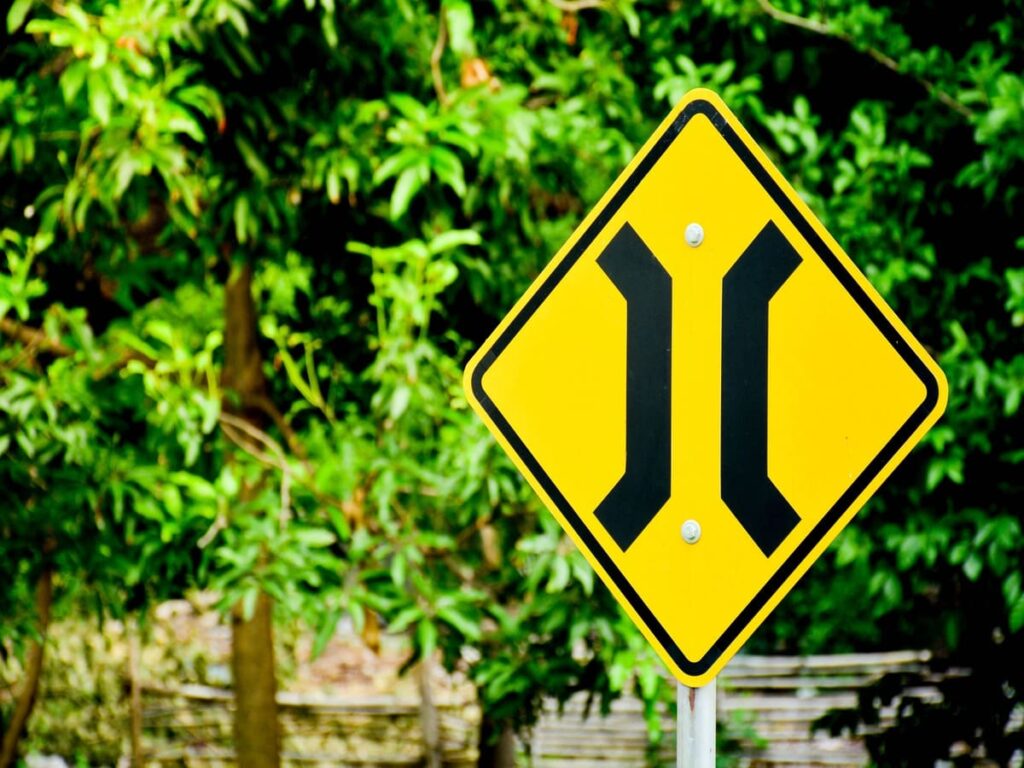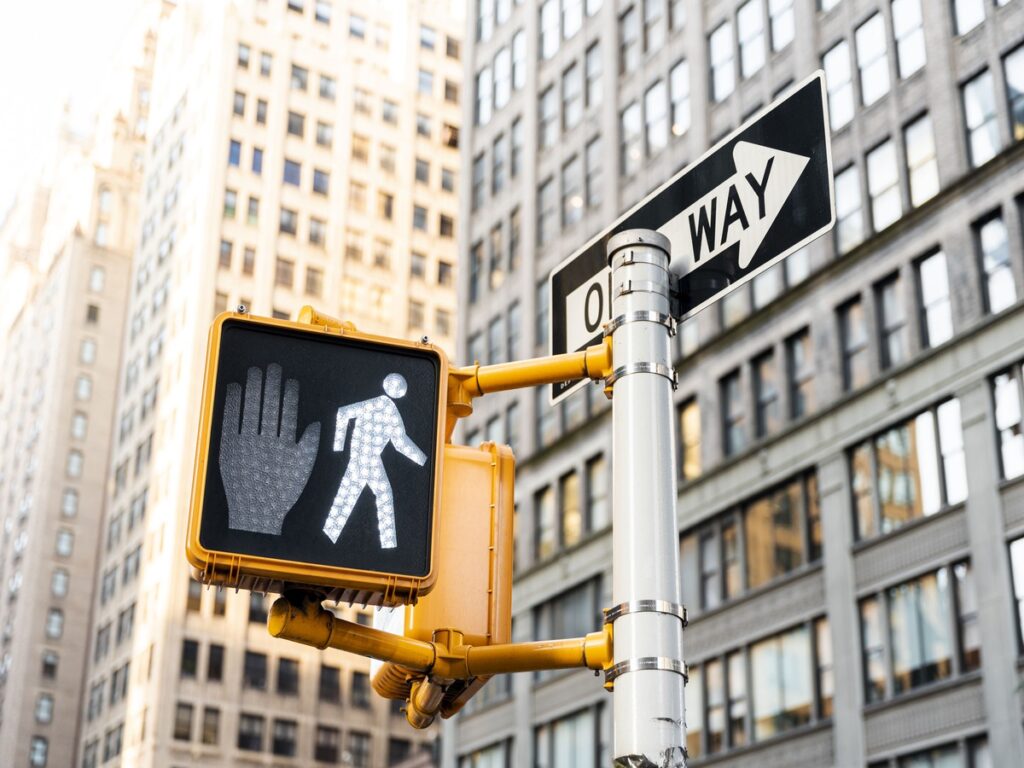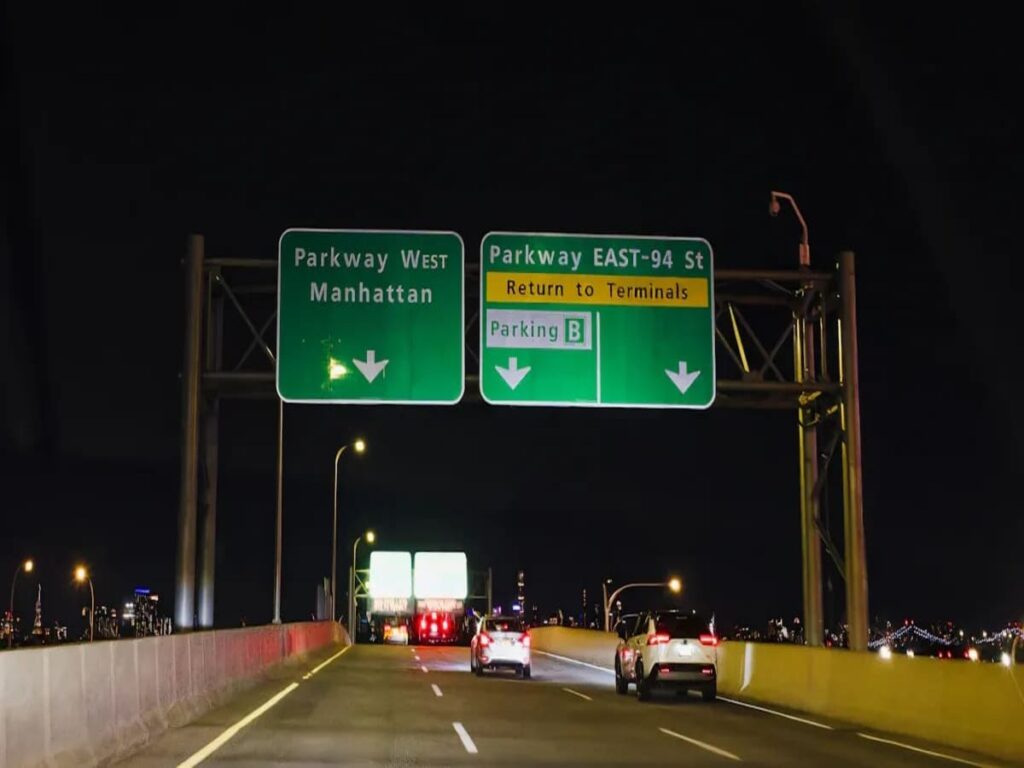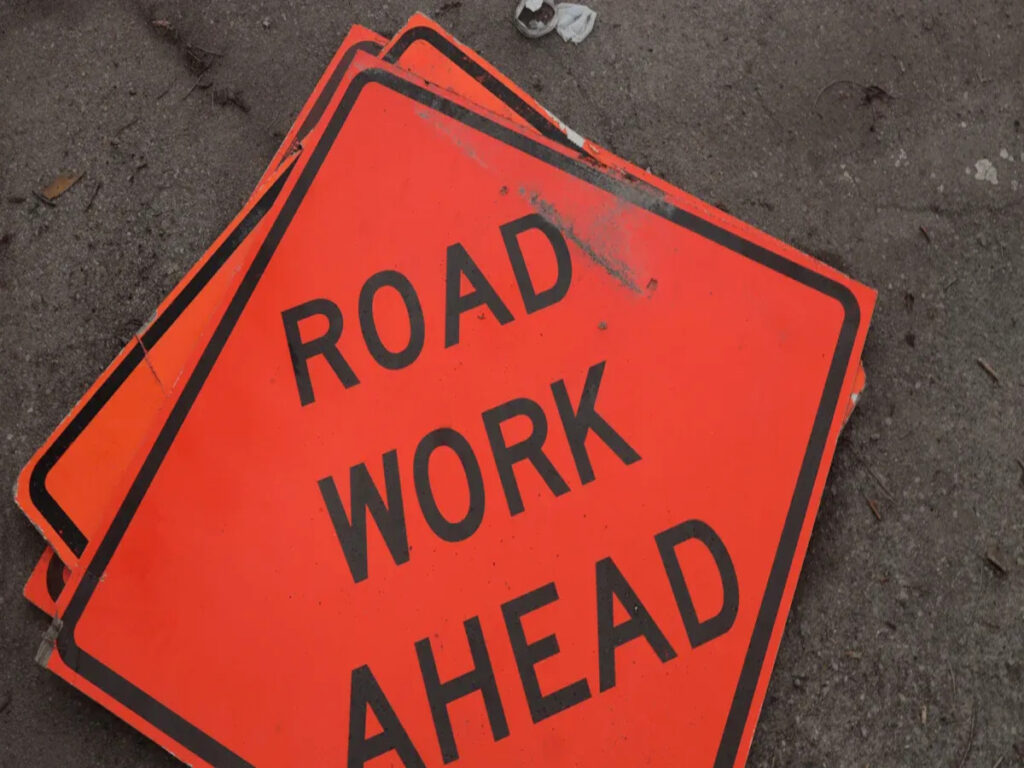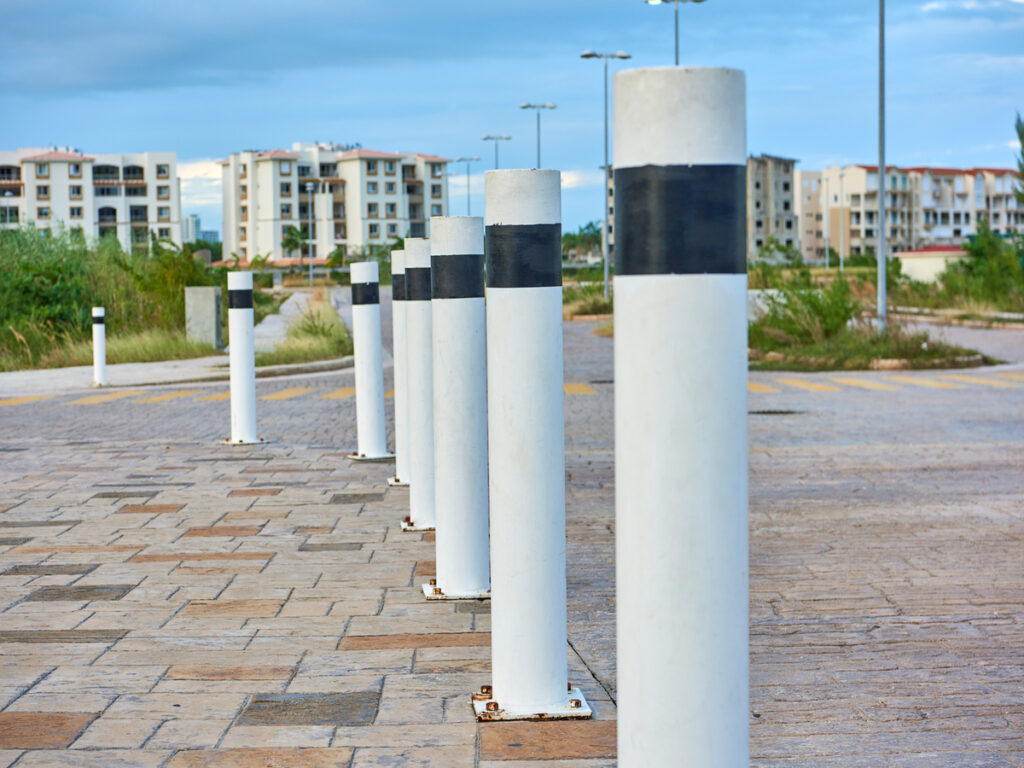
Choosing the right bollard material is very important for your project. Traffic bollards have many uses, like keeping areas safe or controlling traffic. The material you pick affects how well they work. Think about how strong they are, how they will be used, and if they can handle the weather. For example, concrete bollards are great for busy areas. Steel bollards are strong and look modern. But picking the wrong material can cause safety problems or waste money. By thinking about your needs, you can pick the best bollard for your project.
OPTRAFFIC offers a wide range of traffic bollards for sale. Whether you’re managing a high-traffic urban area or setting up temporary controls, OPTRAFFIC bollards are designed for durability, visibility, and reliable performance—making them a smart investment for any traffic or security project.
Key Takeaways
- Pick bollard materials based on what your project needs. For strong security, use steel; for short-term use, try rubber.
- Think about the environment when choosing materials. Stainless steel doesn’t rust near oceans, and concrete works well in busy areas.
- Match your budget with future costs. Some materials cost more now but need less fixing later.
- Make sure bollards follow safety rules. This avoids problems and keeps people safe in public places.
- Choose bollards that look nice in the area. Fancy designs can make parks and cities prettier while staying safe.
Key Factors to Choose the Right Bollard
Project Purpose and Functionality
Your project’s purpose helps decide the type of bollards you need. Traffic bollards can improve safety, guide traffic, or make spaces look better. Knowing your main goal helps you pick the right bollard.
For example, if you need high security for places like embassies, steel bollards are strong and reliable. For temporary events, flexible bollards made of rubber or HDPE work well. They are light, simple to set up, and easy to move.
Case Studies:
- Urban Renewal Project in Doha, Qatar: Steel bollards were used to protect people and manage traffic.
- Event Management in Riyadh, Saudi Arabia: Flexible bollards helped control crowds during events and saved money.
Choosing a material that fits your project’s purpose ensures the bollards work as needed.
Environmental and Weather Conditions
Where you place the bollards affects the material choice. Some materials handle certain weather better. Think about heat, rain, or salty air when deciding.
For wet or coastal areas, stainless steel bollards resist rust. In busy city spaces, concrete bollards are tough and stand out. For extreme weather, aluminum or polymer bollards are light and won’t rust.
| Factor | Description |
|---|---|
| Longevity | Handles weather like rust or wear over time. |
| Maintenance Needs | Think about repair costs and how often they’re needed. |
| Key Materials | – Stainless Steel: Strong and looks nice. |
| – Concrete: Tough but not flexible. | |
| – Aluminum: Light and rust-free. | |
| – Polymer: Cheap for low-impact uses. |
Picking the right material for the environment keeps bollards useful and looking good.
Budget and Cost Considerations
Your budget matters when picking bollard materials. Some cost more upfront but save money later with less upkeep. For example, crash-rated steel bollards cost more but offer top security for risky areas.
Money issues also affect choices. During tough times, cheaper options like plastic bollards are used for smaller needs. Maintenance and upgrades also add costs, so plan for these.
| Factor | Description |
|---|---|
| High Costs | Crash-rated bollards cost more due to testing and quality. |
| Complex Regulatory Standards | Meeting strict rules can raise costs and limit choices. |
| Maintenance and Upgrades | Repairs and updates add to long-term spending. |
| Economic Fluctuations | Tight budgets may favor cheaper bollards during hard times. |
Balancing cost and value helps you pick the best bollard without overspending. Worth noting is that cost considerations often come down to whether you choose imported or locally sourced materials. Each option comes with its own set of benefits and trade-offs. To explore this further, check out the blog Imported vs Locally Sourced Bollard Materials: What’s Best for Your Project?. It will help you evaluate which material source is best suited to your project’s budget and requirements.
Aesthetic and Design Requirements
When picking traffic bollards, looks are very important. Bollards do more than protect; they also make spaces look nice. Think about how the bollards will match nearby buildings and fit the design style. For example, fancy bollards can make places like parks or city squares more attractive.
Decorative bollards mix safety with style. They work well in areas needing both. Materials like wood, stone, or fancy metal are common for stylish projects. These bollards can fit into old-fashioned or modern areas, creating a unified look.
Tip: Pick bollards that match your project’s design. For example, stainless steel bollards look modern, while cast iron bollards give a classic feel.
By focusing on design, you make sure the bollards are useful and improve the space’s appearance.
Compliance with Safety and Regulatory Standards
Safety rules are key when choosing bollards. Make sure they follow local laws to avoid fines and keep people safe. For example, bollards in busy areas should pass crash tests to protect well.
Accessibility is also important. Bollards need to be at least three feet apart so people with disabilities can move through easily. Emergency vehicles must also have access. Use removable bollards to allow quick entry during emergencies.
Different ratings show how strong bollards are. K ratings check how well bollards stop vehicles at certain speeds. M ratings, based on ASTM rules, are newer and stronger measures. Crash tests confirm if bollards meet these safety standards.
Note: Always check that your bollards meet local safety rules. This keeps people safe and avoids legal trouble.
By following safety and rules, you create a safe space and avoid problems with the law.
Common Materials for Traffic Bollards
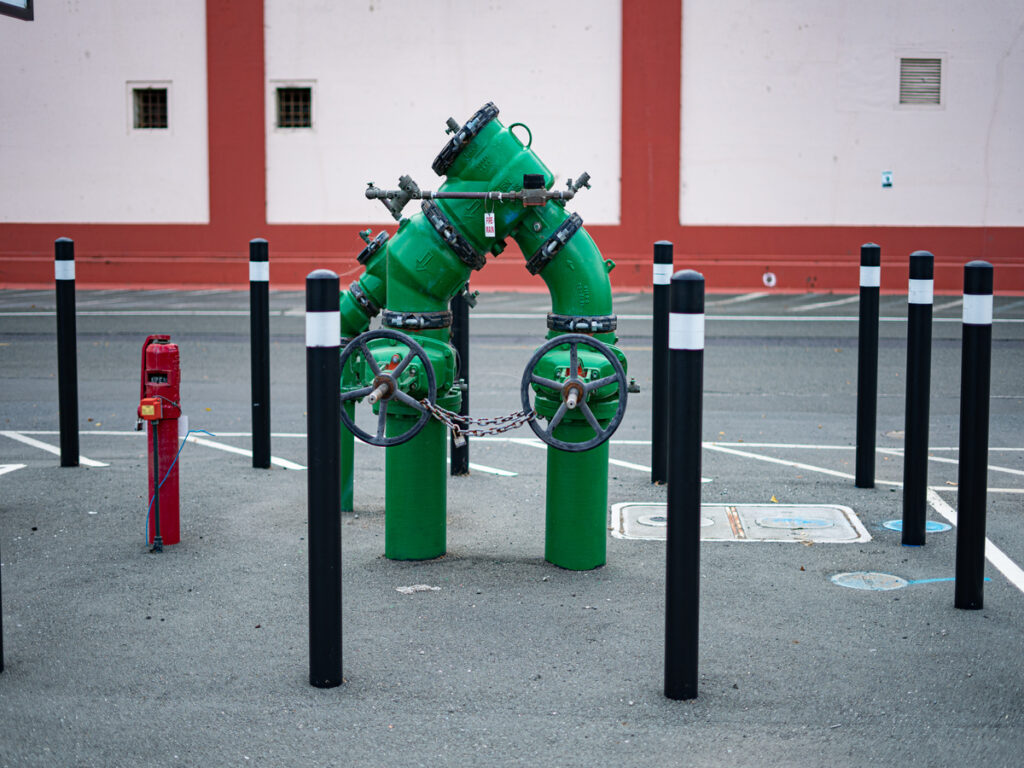
Steel Bollard: Strong and Flexible
Steel bollards are tough and very useful. They can handle strong impacts, making them great for areas with vehicle risks. Use steel bollards in places like government buildings or factories where safety is key. They stop theft and block unwanted access, giving solid protection for your project.
Steel bollards can be made to fit different needs. You can choose fancy designs for cities or crash-rated ones for heavy-duty use. Special coatings, like galvanizing or powder coating, stop rust. This keeps them working well and looking nice for a long time. Once set up, steel bollards need little care, saving money over time.
Stainless Steel Bollard: Rust-Free and Stylish
Stainless steel bollards are strong and look good. They have chromium, which stops rust and corrosion. This makes them perfect for outdoor spots, especially near the ocean or in rainy and snowy areas. These bollards stay strong even in bad weather.
Stainless steel bollards make cities look better. They come in finishes like brushed or shiny, so they match nearby buildings. You’ll see them in stores, schools, and public spaces where looks and safety both matter. Their modern design adds style while keeping people safe.
To learn more about how stainless steel options can impact your bollard choice, check out the blog 304 vs 316 Stainless Steel: What’s the Difference for Your Bollards?. It explains the key differences between these two popular stainless steel grades and how they affect bollard performance in various environments.
Aluminum Bollards: Light and Decorative
Aluminum bollards are light but strong enough for low-traffic areas. They don’t rust, so they’re good for outdoor use, especially where rust is a problem. Because they’re light, aluminum bollards are easy to set up, making them handy for temporary uses.
These traffic bollards are best for decoration. Aluminum can be shaped into cool designs, making parks, walkways, or shopping areas look nice. They aren’t as strong as steel, but they’re perfect for projects that care more about style than heavy protection.
Tip: Pick aluminum bollards to make spaces look nice and stay durable.
Concrete Bollards: Strong and Long-Lasting
Concrete bollards are tough and built to last. They work well in places with lots of traffic or high-security needs. Their solid design makes them great for permanent barriers that stay strong over time. You’ll often see them in cities, parks, or government areas where strength matters most.
Concrete bollards also look powerful. Their sturdy appearance shows authority and safety, helping block unwanted access. You can change their look with paint or decorations to match nearby buildings. But once installed, moving them is hard, so plan carefully before placing them.
Tip: Pick concrete bollards for projects needing strong and permanent solutions.
Plastic and Polyurethane Bollards: Safe and Flexible
Plastic and polyurethane bollards are safe and bendable, making them useful for light-duty jobs. They’re made from strong materials like rubber and polyurethane, which can bend without breaking. These plastic traffic bollards absorb hits, reducing damage to cars and property. This makes them perfect for areas with lots of vehicle movement.
You’ll find these bollards in bike paths, warehouses, or temporary traffic zones. They’re lightweight, so setting them up or moving them is easy. Safety tests like ASTM F2656 and ASTM F3016 make sure they work well in busy places.
| Feature | Benefit |
|---|---|
| Material Strength | Bendable but tough materials like rubber and polyurethane. |
| Impact Resistance | Absorbs hits, lowering damage to cars and property. |
| Compliance Testing | Passes ASTM tests for use in busy areas. |
For a deeper look at how plastic and polyurethane materials perform in safety applications, refer to the blog “Plastic Delineator Material Comparison”. It provides a clear breakdown of material strengths, ideal use cases, and practical considerations for choosing the right bollard or delineator solution.
Cast Iron Bollards: Classic and Stylish
Cast iron bollards add a traditional look to your project. Their old-fashioned style fits well in historic areas, walkways, or decorative spaces. They make places look nice while still being useful.
These bollards are heavy and strong, giving a feeling of permanence. Many have fancy designs with detailed patterns, adding charm to public areas. Cast iron bollards are best for places where looks matter more than security. They aren’t as tough as steel, so they’re better for decoration than stopping vehicles.
Tip: Choose cast iron bollards for projects needing safety and classic style in older or city spaces.
Timber Bollards: Stylish and Useful
Timber bollards are both useful and nice-looking. They are made from natural wood, giving them a warm and friendly feel. These bollards work well in parks, historic places, and walking areas.
A big benefit of timber bollards is how they match different designs. Whether the area looks old-fashioned, modern, or simple, timber bollards fit right in. They often go with benches, planters, and paths to make spaces look neat. This way, safety doesn’t ruin the beauty of the area.
Timber bollards are also popular for decoration in cities. They make public spaces look better while still being useful. People now care more about mixing safety with good design. Timber bollards help keep spaces safe while looking nice.
When setting up timber bollards, it’s important to bury them correctly. This keeps them steady and lasting longer. Treating the wood to stop rot and damage is also needed. Regular care, like sealing and staining, helps them stay strong outdoors.
Timber bollards are more than just barriers. They add style and improve the look of spaces. Using these wooden bollards in your project gives you both safety and beauty.
How to Choose the Right Bollards for Your Project
High-Security and Impact-Resistant Applications
For high-security areas, pick strong materials that handle force well. Steel bollards are the best choice because they are tough and long-lasting. Many are crash-rated, meaning they can stop fast-moving vehicles. This makes them perfect for protecting places like airports, government buildings, and military bases.
Installing high-security bollards correctly is very important. Strong anchoring keeps them effective during impacts. For example, steel bollards filled with concrete offer top protection for columns. Shock-absorbing bollards work well to protect delicate equipment. The table below shows the best bollards for different zones:
| Protection Zone | Recommended Bollard Type | Installation Distance | Special Considerations |
|---|---|---|---|
| End-of-Aisle | Heavy-duty steel with bright coating | 4-6 inches from rack | Use two bollards at busy corners |
| Support Columns | Concrete-filled steel | 6-8 inches from column | Arrange in diamond shape for full protection |
| Sensitive Equipment | Shock-absorbing bollards | 3-4 feet clearance zone | Allow space for maintenance |
| Building Corners | Angled steel bollards | 8-12 inches from wall | Add guardrails for extra safety |
Tip: Keep bollards 36-42 inches tall and spaced to block cars.
Check and maintain bollards often to keep them working well. Picking the right bollards and installing them properly ensures safety for people and vehicles.
Urban and Coastal Environments
Urban and coastal areas need special bollards. In cities, they must look nice and work well. In coastal spots, they must resist rust and strong weather. Stainless steel bollards are a great option. They don’t rust and look sleek, making them good for city streets and waterfronts.
In cities, concrete or stainless steel bollards stop slow-moving cars in pedestrian zones. For high-security spots like airports, reinforced concrete or steel bollards are better. Flexible bollards, made from bendable materials, help manage traffic in busy areas. The table below explains different bollards for urban and coastal use:
| Type of Bollard | Material Used | Key Features and Applications |
|---|---|---|
| Low-Speed Bollards | Concrete, Stainless Steel | Stop slow cars in pedestrian zones and storefronts. |
| High-Speed Bollards | Reinforced Concrete, Steel | Block fast vehicles in secure places like airports. |
| Impact-Absorbing Bollards | Shock-absorbing materials | Reduce car speed during impacts in cities. |
| Hydraulic Bollards | Steel | Retractable for emergencies in secure areas. |
| Flexible Bollards | Composite Materials | Bend on impact, good for traffic control. |
Weatherproof bollards are vital for coastal areas. Stainless steel and aluminum resist rust and stay strong. Regular checks keep them working despite tough weather.
Note: Weatherproof bollards last longer and stay visible, keeping people safe.
Decorative and Aesthetic Installations
Decorative bollards make spaces safe and beautiful. They improve how public areas look while staying useful. Cast iron and timber bollards are popular for their classic and natural styles. These fit well in parks, historic areas, and walkways.
When choosing decorative bollards, think about how they match the area. They must also meet safety rules, like allowing wheelchair access while blocking cars. Looks matter too. Detailed designs can make urban spaces more attractive.
Eco-friendly materials like recycled steel and timber are now common. They reduce harm to the environment while staying durable. New technology, like AI, is also improving bollards in cities.
Tip: Pick weatherproof bollards that are easy to see and look good in all weather.
By focusing on both style and safety, you can choose the right bollards for your project. This way, you keep spaces safe without losing their beauty.
Temporary or Flexible Bollard Use Cases
Temporary or flexible bollards are great for quick and easy setups. They are light, simple to install, and can be moved when needed. These bollards are often used for events, construction sites, or temporary traffic control. Their flexibility makes them a smart and affordable choice for short-term safety needs.
One big benefit of temporary bollards is they don’t need to be permanent. For example, during parades or festivals, they create safe zones but can be removed after the event. Materials like plastic, polyurethane, or lightweight aluminum are common because they are strong yet easy to carry.
Here are some examples of how temporary bollards are used:
| Case Study | Description | Source |
|---|---|---|
| New Orleans Attack | Showed the need for mobile barriers after a vehicle attack when permanent bollards failed. | The Guardian |
| Rose Parade Security | Used mobile barriers to keep events safe without ruining the fun. | The Guardian |
| Austin Pedestrian Safety | Highlighted portable barriers improving safety during public events in cities. | KXAN |
These examples show how temporary bollards can fit different needs while keeping people safe. When choosing temporary bollards, think about how strong they are, how easy they are to set up, and if they meet safety rules.
Tip: Pick bright or reflective bollards to make them easier to see at night or in dim light.
Heavy-Traffic or Industrial Areas
In busy or industrial areas, bollards must handle heavy impacts and protect well. Fixed bollards are the best choice here because they are strong and secure. They are built to last through constant vehicle use, making them key for protecting people and buildings.
Materials like steel and reinforced concrete are often used for these bollards. Steel bollards, especially ones filled with concrete, are very strong and durable. They work well for loading docks, warehouse doors, and other risky spots. Reinforced concrete bollards create solid barriers that can stop vehicles completely.
Recent studies highlight important points for bollards in these areas:
- Fixed bollards are best for high-risk zones because they offer better security.
- Materials must handle strong impacts to keep people and property safe.
- Smart technology and eco-friendly materials are becoming more popular in bollard designs.
Smart bollards with sensors are now common in industrial spaces. They can track traffic, spot dangers, and even connect with other devices to improve safety and efficiency.
Note: Check bollards in busy areas often to ensure they work well and follow safety rules.
When picking bollards for heavy-traffic or industrial areas, choose materials and designs that match your project’s needs. This ensures they stay strong and work well over time.
For a deeper understanding of bollard materials and manufacturing processes, check out the blog The Science Behind Bollard Manufacturing and Material Selection. It dives into the technical aspects of bollard production and helps you make an informed decision based on the specific demands of your project.
Long-Term Considerations for Bollard Materials
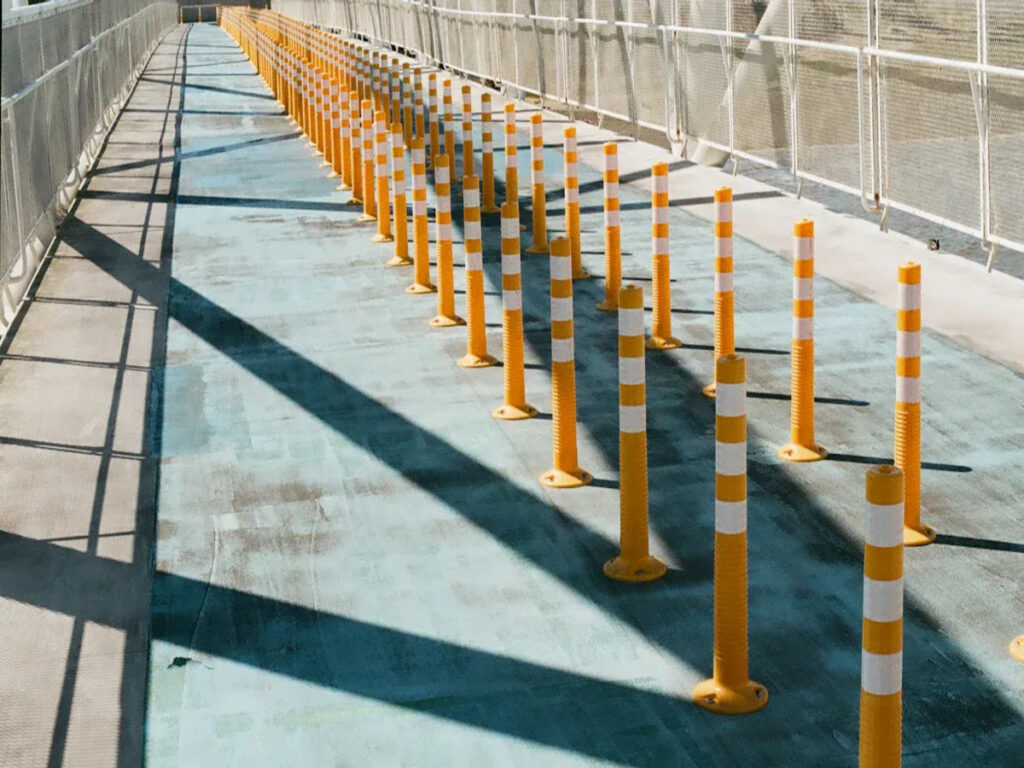
Maintenance and Upkeep
Taking care of traffic bollards keeps them working and looking good. Check them often for rust, cracks, or faded paint. Fixing these problems early keeps bollards safe and useful. Bollards with anti-rust coatings need less care. These coatings protect them from weather, so repairs are less frequent.
Cleaning is also important. Stainless steel bollards need polishing sometimes to stay shiny. Aluminum bollards don’t rust and need little cleaning. If your bollards have lights, use LED bulbs. LEDs last longer and use less energy, saving money on maintenance.
Regular care saves money and makes bollards last longer. Planning for upkeep ensures they stay useful now and in the future.
Lifecycle Costs and Value
Think about more than just the price when picking bollards. Some materials cost more at first but save money later. For example, stainless steel and aluminum last a long time and can be recycled. Their durability makes them worth the higher price.
Concrete bollards are cheaper but may crack and need more repairs. Plastic bollards are affordable but wear out faster in busy areas. Look at all costs, like repairs and replacements, to make a smart choice.
Picking the right material gives you durable and valuable bollards. This lowers long-term costs and keeps them working well.
Sustainability and Environmental Impact
Sustainability is important when choosing bollards. Materials like stainless steel and aluminum are strong and recyclable. This reduces waste and helps the environment. Timber bollards are renewable if the wood is sourced responsibly.
Using LED lights in bollards saves energy and reduces light pollution. Recycled materials in bollards also lower their carbon footprint. These features make bollards better for eco-friendly projects.
By choosing sustainable materials and energy-saving designs, you help the planet. This keeps your project green while still being functional.
Durability and Performance Over Time
Durability is important for your project’s success. When picking traffic bollards, think about how long they will last. Different materials have different strengths, which affects how often they need repairs.
Concrete bollards are strong but can crack in cold weather. Freezing temperatures may damage them over time, making them less useful. While concrete doesn’t rust, it may need replacing sooner than other materials. This makes it less ideal for long-term projects.
Steel bollards are much tougher. They handle impacts better, making them great for busy or secure areas. Stainless steel bollards resist rust, especially near the ocean. Coatings like galvanizing or powder coating make them last even longer. With good care, steel bollards can work well for many years.
Think about the weather and how the bollards will be used. Materials in tough conditions or hit often need extra care. Cleaning and adding protective coatings help keep bollards strong and looking good. Spending more on durable materials now saves money later and keeps your project running well.
By choosing the right materials, you make sure traffic bollards stay safe and useful for a long time.
Picking the best material for traffic bollards is important. Think about how strong it is, how it works, and how it looks. Check if the material suits the area and matches the design nearby. Always choose trusted brands to get good quality and help when needed. Balancing these things keeps your project safe and nice-looking. Talking to experts or sellers can help you decide and make sure your choice lasts a long time.
FAQ
What material lasts the longest for traffic bollards?
Steel and stainless steel last the longest. Steel is very strong and handles impacts well. Stainless steel doesn’t rust, even in wet or salty areas. Both work great in busy or tough places. Pick stainless steel for coastal spots or modern designs.
Can bollards be designed to fit a project’s style?
Yes, bollards can match your project’s style. Materials like cast iron, aluminum, and wood allow creative designs. You can pick colors, patterns, and finishes to match nearby buildings. Custom designs make bollards safe and stylish in public spaces.
How can I keep bollards in good shape?
Take care of bollards by cleaning and checking for damage. Add protective coatings when needed. For example, polish stainless steel or seal concrete to protect them. Fix small problems early to avoid big repairs and keep bollards looking good.
Are plastic bollards strong enough for traffic use?
Plastic bollards are good for light jobs like marking lanes. They are cheap, bendable, and easy to move. But they aren’t strong enough for heavy traffic or high-security areas. Use steel or concrete for tougher needs.
What should I think about when picking bollard materials?
Think about the project’s purpose, weather, cost, and design. Use stainless steel for wet areas, concrete for strong barriers, and plastic for temporary needs. Always check that the material meets safety rules and fits the job.

